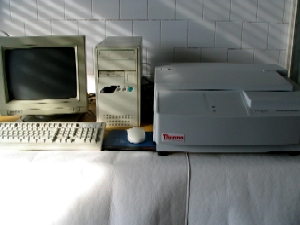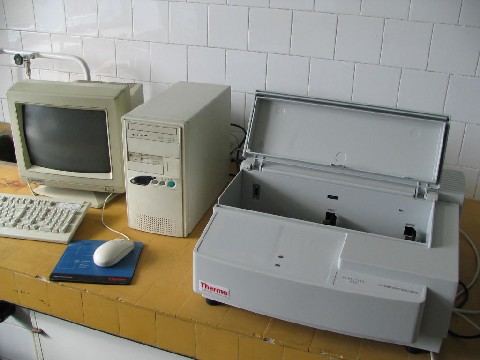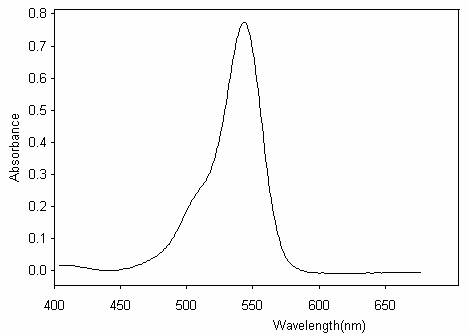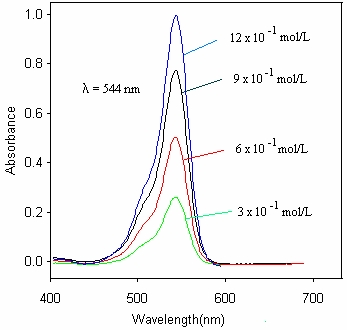 |
 |
|
 |
|
|
|
|
HETEROGENEOUS SYSTEMS
>>
members
|
projects
|
facilities
|
partners
|
publications
|
applications
|
photo gallery
UV-VIS Spectrophotometer
Instrument's name: Cary 3500 Flexible UV-Vis
Characteristics:
- Wavelength range: 190÷1100 nm;
- Double beam spectrophotometer with advanced photometric performance;

- Equipped with a Xenon lamp that can collect 250 data points per second accurately and reproductibly;
- Si-photodiode detector with simultaneous measurements on all channels;
- Maximum scanning speed: 150,000 nm/min;
- Spectral resolution: 0.1 nm;
- Pulse rate: 250 Hz;
- Photometric range: 4,0 Abs;
- Stray light: at 198 nm (12 g/L KCl, BP/EP method) < 1.0%
at 220 nm (10 g/L NaI, ASTM method) < 0.003%
at 370 nm (50 mg/L NaNO2) < 0.003%
- Photometric stability: 0.0003 Abs/ora;
- Photometric range: 6 Abs;
- Photometric accuracy: ± 0.05;
- Excellent spectral resolution, with a spectral bandwidth that can be varied from 0.1 to 5.0 nm in 0.01 nm increments.

Components:
- Has two Modules:
- Cary 3500 Flexible UV-Vis
- Cary 3500 Compact Peltier UV-Vis
- Accurate and rapid temperature-controlled experiments can be performed between -5 and 110°C using a unique and fully integrated air-cooled Peltier system;
- The experimental temperature inside the cuvette is monitored using high-precision digital Cary temperature probes with a thermal ramp rate of up to 40°C/min;
- Precise analysis of small volume sample measurements is achieved thanks to the highly collimated and uniform beam of less than 1.5 mm width, coupled with permanent optical alignment of stationary cell holders;
- The spectrophotometer is powered by Cary UV Workstation software. Built-in applications include kinetics, concentration, wavelength scanning, and temperature-based measurements. It also includes over 50 built-in calculations that can be saved and applied automatically.
 

UV-VIS spectrum for high concentrations of methylene blue using a standard cell
of 1 cm length and 10 seconds average signal duration
|
|
|
|
 |
 |